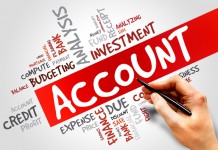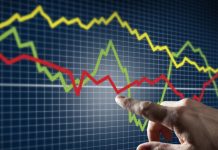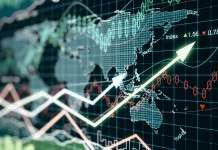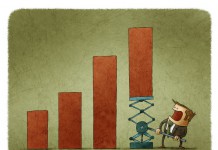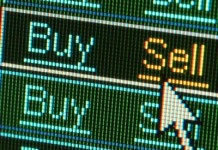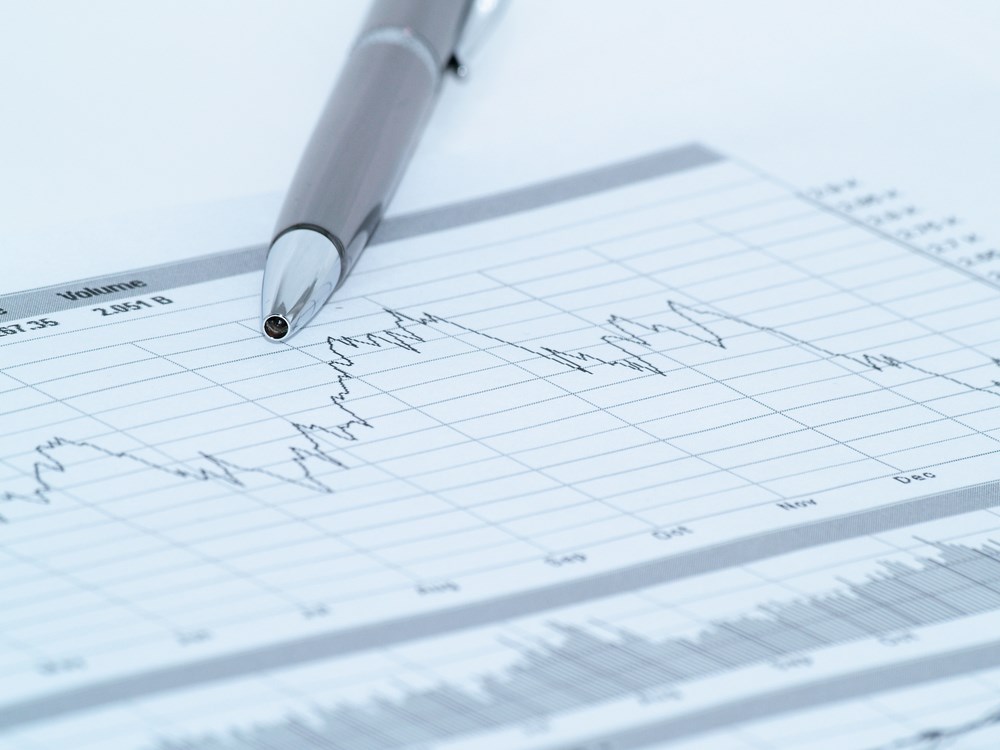 The previous article discusses issues related to financial reporting and its role in reaching financial information of a listed company. The financial statements of a listed company allow the prospective investor to know if the company being researched is in a good financial situation and, above all, what its economic future might look like.
The previous article discusses issues related to financial reporting and its role in reaching financial information of a listed company. The financial statements of a listed company allow the prospective investor to know if the company being researched is in a good financial situation and, above all, what its economic future might look like.
Financial statement
The review of the financial statements for the completed financial year will bring a limited amount of information, amounting to obtaining information about owned assets, the amount of equity and foreign capital, obtained financial result in a given financial year, etc. The items from a minimum of two or three years should be tracked, and, to put it precisely, make a financial analysis of the items contained in the reports for several years. Each report contains data from the completed year and the previous one, so obtaining information from several years is not a problem. Why should we consider a period of several years? Because it will allow us to determine the size, dynamics and structure of changes. Put simply, it will help to determine whether the company is growing, or maybe the company has been stagnant for several years, or even the company is slowly “rolling up” from the market. It is not enough to check if a company has made a profit in a given financial year, because it is an accounting result subject to manipulation. The company was able to sell its assets, lay off workers, or cut costs, in order to achieve such a result, not to mention the creative accounting and shifting certain costs for the next financial year, of course only on paper. Such situations, when we discover them, should be alarming and may indicate problems of the company.
Preliminary analysis of financial statements
The financial report contains a large amount of information that we do not need to perform financial analysis. In order to specify the most important items from the financial statements, the so-called analytical balance sheet and profit and loss account (P&L) are performed.
Analytical balance sheet and profit and loss account
The analytical balance sheet and profit and loss account contains only the main items that will be needed for the financial analysis of a
given report.
Balance sheet
Assets
A. Fixed assets
1. Intangible assets
2. Tangible fixed assets
3. Long-term investments
B. Current assets
1. Stocks
2. Short-term receivables
3. Short-term investments
4. Short-term prepayments
Equity and liabilities
A. Equity
1. Share capital
2. Supplementary capital
3. Other reserve capital
4. Net profit (loss).
B. Liabilities
1. Long-term liabilities
2. Short-term liabilities
As you can see, the analytical balance focuses mainly on the basic items of fixed and current assets and sources of financing, own and foreign.
Profit and loss account
1. Revenue from sales of product, trade goods and materials
2. Fixed costs
3. Floating costs
4. Operating profit (loss) EBIT
5. Financial income
6. Financial costs
7. Gross profit (loss)
8. Income tax
9. Net profit (loss)
P&L also focuses on the most important items, such as operating profit, EBIT, that is from the core business, profit from all economic activity, i.e. including financial operations and net profit, after tax.
Analysis of individual items of the financial statements
Horizontal analysis involves examining the direction of changes, whether positions increase or decrease and the percentage size of these changes.
The deviation will show how the position has changed, examples of property, plant and equipment at the end of the period compared to the beginning of the period.
Deviation = value at the end of the period – value at the beginning of the period
The dynamics shows the percentage change in the examined item over the period considered, for example during the year.
Dynamics = (value at the end of the period – value at the beginning of the period)/(value at the beginning of the period) x 100%
Vertical analysis will consist in examining the structure of changes in particular items of the financial statements. For example, whether tangible fixed assets increase their share in the entire asset item, i.e. simply whether the company increases its assets, buys buildings, production equipment, etc.
Structure = (test item)/(total value) x 100%
An example of the preliminary analysis of the financial statements
ABC’s balance sheet is as follows:
| Assets | 31.12.2016 | 31.12.2017 |
| A. Fixed assets | 36 800 | 46 500 |
| 1. Intangible assets | 10 000 | 13 000 |
| 2. Tangible fixed assets | 25 000 | 31 500 |
| 3. Long-term investments | 1 800 | 2 500 |
| B. Current assets | 42 000 | 40 000 |
| 1. Stocks | 11 000 | 7 500 |
| 2. Short-term receivables | 27 000 | 25 500 |
| 3. Short-term investments | 3 500 | 6 000 |
| 4. Short-term prepayments | 500 | 1 000 |
| TOTAL ASSETS | 78 800 | 86 500 |
| Equity and liabilities | 31.12.2016 | 31.12.2017 |
| A. Equity | 30 000 | 35 000 |
| 1. Share capital | 20 000 | 22 000 |
| 2. Supplementary capital | 5 000 | 5 000 |
| 3. Other reserve capital | 1 000 | 2 000 |
| 4. Net profit (loss) | 4 000 | 6 000 |
| B. Liabilities | 48 800 | 51 500 |
| 1. Long-term liabilities | 21 800 | 21 500 |
| 2. Short-term liabilities | 27 000 | 30 000 |
| EQUITY AND LIABILITIES TOTAL | 78 800 | 86 500 |
Fixed assets
Deviation = 46 500 – 36 800 = 9 700
Dynamics = (46 500 – 36 800)/36 800 x 100% = 26,36%
Structure 2016 = 36 800/78 800 x 100% = 46,7%
Structure 2017 = 46 500/86 500 x 100% = 53,76%
Conclusions: the value of non-current assets increased in 2017 in comparison to 2016 by 9,700. This was an increase of around 26%, ie the company increased its fixed assets quite significantly. The company also increases the share of non-current assets in the total assets from 46.7% to almost 54%.
Current assets
Deviation = 40 000 – 42 000 = -2 000
Dynamics = (40 000 – 42 000)/40 000 x 100% = -5%
Structure 2016 = 42 000/78 800 x 100% = 53,3%
Structure 2017 = 40 000/86 500 x 100% = 46,24%
Conclusions: the value of current assets fell in 2017 compared to 2016 by 2,000, or 5%. It does not have to be a disturbing signal, because the company could sell more inventory from the warehouse. A little worrying may be the fact that short-term receivables fall, i.e., inter alia, for deliveries and services, but you should also check the profit and loss account in the context of changes in income and profit, because customers could use trade credit and more regulate payments at once, which it would not affect the company’s turnover.
Total assets
Deviation = 86 500 – 78 800 = 7 700
Dynamics = (86 500 – 78 800)/ 78 800 x 100% = 9,77%
Conclusions: the total value of the company’s assets increased by less than 10%, which is a reasonably satisfactory result, showing that the company is growing, although the dynamics of changes is not very large. I am glad about the increase in fixed assets, because the sale of non-current assets is a very disturbing signal.
Equity and liabilities
In 2016, the company financed itself with equity in 38% and debt in 62%, which means that the company is significantly leveraged, which increases the potential profits, but also the risk of insolvency. Many theories assume an optimal ratio of equity to foreign capital at the level of 70% equity and 30% debt.
In 2017, the company increased its equity by 5,000, i.e. by 16.67%. This is a good sign showing that some of the profits are spent by the owners on the increase of the company’s equity, which reduces the risk of insolvency. In 2017, the company financed itself with equity of 40.5% and with debt at 59.5%, which still constitutes a high risk of insolvency.
The most important issues in analyzing the financial statements
Let us summarize the conclusions that flow from the analysis of the financial statements. First of all, we must pay attention to the direction of changes and their size in the last few years. It is also important how the structure of the balance sheet, ie the company’s assets and its sources of financing, changes. Here are some tips for analyzing your financial statements.
Production company vs. trade and service company
Production company
Balance sheet
- Tangible fixed assets will dominate, i.e. buildings, machinery, etc.
- The stocks are quite large because they are used for production.
Profit and loss account
- Revenues from the sale of products (i.e. manufactured by the company) will be the dominant item. The production costs of products will also dominate.
- Revenues from the sale of materials and goods (i.e. ready-made items that we resell with a margin) will constitute a small percentage.
Trade and service company
- Tangible fixed assets are usually lower than in manufacturing companies, because companies do not need machines, many buildings etc., although there are of course exceptions.
- Stocks will also usually have a lower value.
Profit and loss account
- Revenues from the sale of materials and goods will be the main item.
The company develops when
- Increases revenues by maintaining profitability, i.e. costs and profit grow in proportion to revenues.
- Increases or maintains, possibly slightly reducing the status of property, plant and equipment, i.e. does not sell off assets to maintain a business.
- Increases receivables proportionally to revenue growth. The increase in turnover will cause an increase in receivables.
- Increases equity in proportion to the increase in profits, which means that the company leaves part of the profits in the company, which increases its solvency and may mean that the owners believe in the company and want to invest in it.
- Increases liability in proportion to revenue growth, not faster.
The company’s bad prognosis when
- Revenues are falling
- Costs go down or significantly increase, in the first case it does not have to be good, because the company wants to cut costs quickly, and the easiest way is to release employees, which may bring temporary relief, but in the long run it can be fatal, because later acquiring a new one the employee and his training can be more expensive.
- Receivables and liabilities are growing faster than revenues, which may be evidence of the company’s reckless activities in trouble, which provides trade loans to insolvent contractors or has problems with paying liabilities itself.
- Material tangible assets fall, which means simply selling off the company’s assets.
- Own equity falls, so the owners are slowly withdrawing from the company because they see that the ship is going down.
- Financial costs increase significantly, which may mean that the company must use more interest-bearing loans and credits.



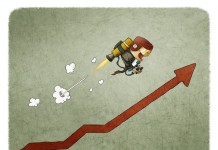

![How to install MetaTrader 4 / 5 on MacOS Catalina? Simple way. [VIDEO]](https://comparic.com/wp-content/uploads/2020/07/mt4-os-218x150.jpg)

